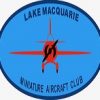Once you have passed your bronze wings (and in a lot of cases before) the first thing you want to do is start throwing your model around the sky like a lunatic so that everyone will be impressed by your incredible skills on the sticks.
However, there is a safe way to go about it and a not so safe way – so I thought I should start writing a series of posts on how to improve your aerobatic skills…
Finding a suitable model
Not all models are aerobatic although most can be made to do some manoeuvres, and before you start mentioning Bill Hempel flying 3D freestyle with a 50% Cub on YouTube don’t get your hopes up – but it does prove that anything is aerobatic if you modify it enough.
We can show you ways to improve the performance of your trainer by increasing the throws on your control surfaces and changing the incidence on your wings. This is probably the safest way to go as your trainer will still have some inherent stability that could save some expensive accidents. Once you get more confident you can move on to a more advanced model. I would recommend starting with an advanced low-wing trainer before you refinance the house and get that 2 meter 50cc TOC Extra 260! Things to look for in an advanced trainer include…
- Low or mid-mounted wings
- Semi-symetrical or symetrical wing section
- Larger control surfaces, possibly with a servo on each aileron
- Rudder, elevator, aileron, and throttle control
Stick with something that still has a trainer type construction – box type fuselage, built up wings and solid tail feathers – this will make it easier to repair when you have those almost certain mishaps.
Moving onwards and upwards
Once you have the basics of aerobatics mastered and want to move onto something more advanced you need to decide where you want to focus your attention. There are three main types of aerobatics (as defined by competition):
- Precision – Popular in Europe, this is highly specialised models flying extremely precise aerobatic figures to a predetermined schedule. Precision aerobatics is not for the faint hearted and takes a lot of practice (and a lot of money) to master.
- 3D/Freestyle – All the rage at the moment, these are the models that hang around in the air for ever and perform manoeuvres with names like ‘Blender’, ‘Waterfall’, ‘Wall’ and ‘Harrier’. Freestyle rounds in competition are often flown to music.
- IMAC – The International Miniature Aerobatics Club is the small version of the IAC. Competition models must be scale in appearance and fly scale type aerobatic manoeuvres. Planes are often large petrol engine powered models.
At the moment the most popular models are those that are either total 3D/Freestyle models or IMAC style scale models. If I was to recommend a model type then it would be a scale IMAC model such as the Extra 260, Yak54, SU26, Extra 330 or Edge 540 as these models are light and strong and can be flown with precision on low rates or 3D with high rates.
A note about size…
There are lots of good models out there and sometimes it can be hard to choose what you want to fly. A lot of people are doing very well flying small foam models such as ‘Shockflyer’ style models or the Multiplex Acromaster. These are fine electric models with good performance in light winds which help build confidence without putting a huge dent in your wallet.
Larger models around the .46 to .60 size are the most popular. They will return a good performance for a pretty good price, and will still fit in the car easily.
More and more people now are turning to larger models with petrol engines. 1/4 scale models with 25cc engines are the smallest seen in competition these days with 50 – 100cc being popular with the experts. The truth of the matter is that – when it comes to advanced aerobatics – bigger models fly better and are easier to lock into the hover. They do however cost a lot of money and you have to ask yourself how confident you would be practicing rolling harriers 6 inches off the deck with the kids college money?!?!
Well that’s it for this post. Next time we’ll start looking at some aerobatic theory so we can begin to practice safely…
